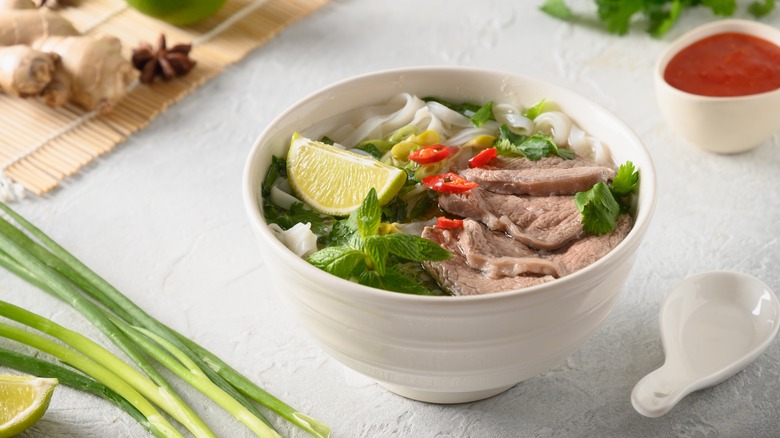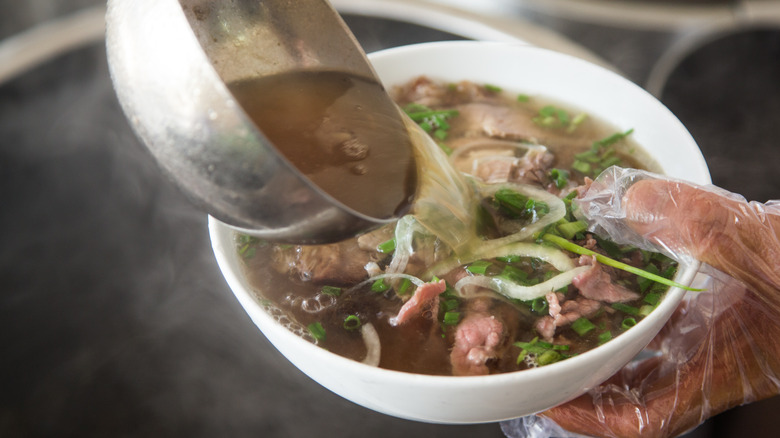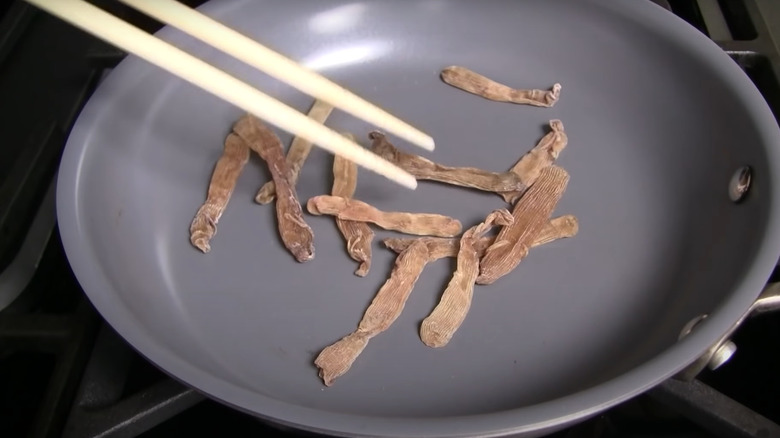Your Homemade Pho Is Seriously Missing Some Worms
If you didn't grow up eating pho and only recently learned how to make it, you probably think the stuff from restaurants tastes a lot better. Made up of components including noodles, meat, and broth, the dish seems simple enough to whip up at home. But while you can technically make pho without making a stop for specialty ingredients, the truth is it may not taste as good no matter how many fresh herbs, bean sprouts, and squeezes of lime you top it with. Could the answer be invertebrates?
The key to a delicious pho is the broth. According to chef and restaurateur Leighton Rossi, who goes by "Leighton Pho" on YouTube, pho broth comes together in three stages: pre-seasoning, making final adjustments, and boosting. During these three stages you add ingredients such beef bone concentrate, cardamom, star anise, Hạt Nêm, and fish sauce, continuing to build flavor as you go. Rossi's broth gets its flavor primarily from the blend of spices he uses, but in other pho recipes, that rich, distinct flavor sometimes comes from an ingredient you might not expect: worms.
Adding worms to pho
In Hanoi-style pho, dehydrated peanut worms are often the broth's main source of flavor. Also known as sipuncula, or sa sung in Vietnamese, these worms come from the ocean, and are therefore considered a seafood. Seafood pho broth more commonly calls for dried shrimp, squid, and seaweed, but northern Vietnamese cooks traditionally use sa sung in their place, a practice that is now becoming more popular.
Though they are technically earthworms since they live on the ocean floor, sa sung don't taste particularly earthy. Instead, Vietnamese chefs say sa sung lend an aquatic depth of flavor without the fishiness. They also have an intense umami flavor that is distinct from other dried seafood products. That's because when you add sa sung to pho broth, you're essentially adding natural msg. The thought of infusing your soup with dried worms might seem formidable at first, but sa sung are a natural source of glutamate — one of the compounds responsible for umami.
How to cook pho with sa sung
Cooking pho with sa sung isn't all that different from cooking it with any other dried seafood. But before you add the sa sung to the broth with all the other aromatics, you first have to clean and prepare them. Start by lightly toasting them in a pan, similar to how you would with whole spices. Then, cut them lengthwise down the middle to release any sand from the inside. Once sand-free the sa sung are ready to be cooked and rehydrated in the broth.
You may be able to find sa sung at a Vietnamese grocery store, but the product is much easier to find online. Because they are somewhat of a delicacy outside of Vietnamese cuisine and are harvested by hand, sa sung are fairly expensive, costing around $16 for a single pouch. If you are unable to find any or they're simply out of your price range, dried scallops are a viable alternative, however your pho will be missing out on much of the same umami flavor.


